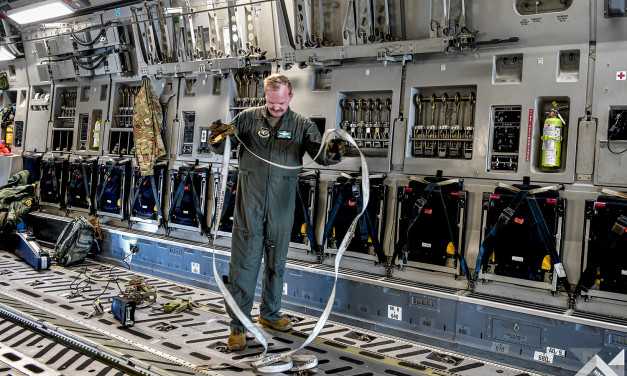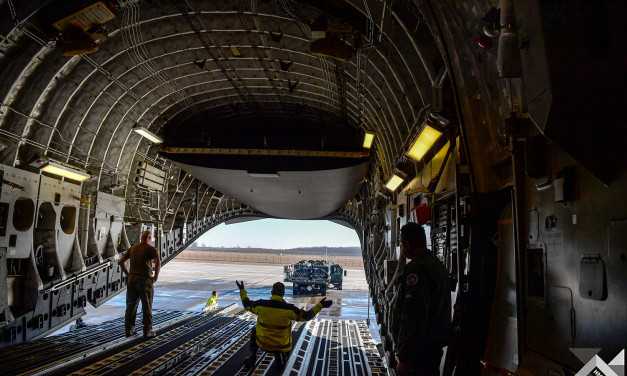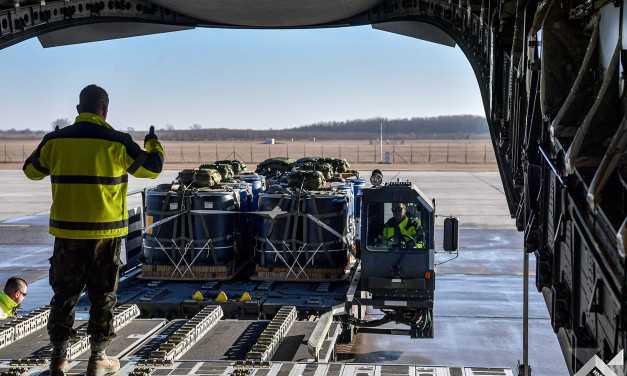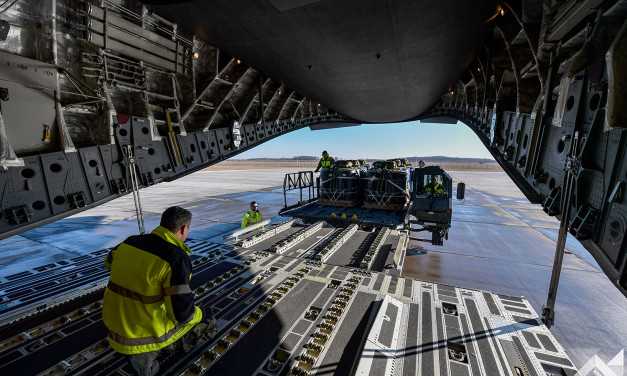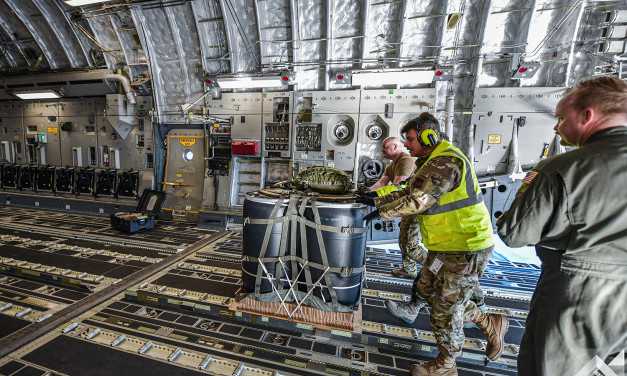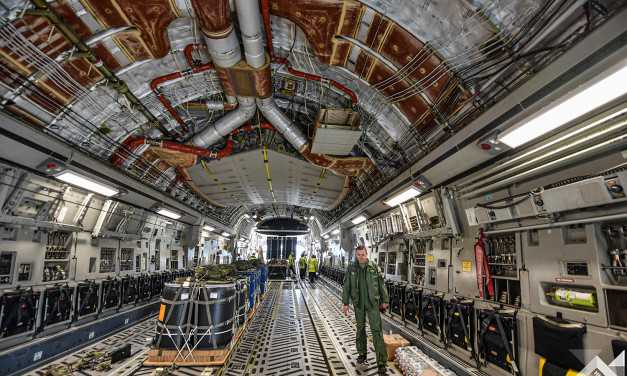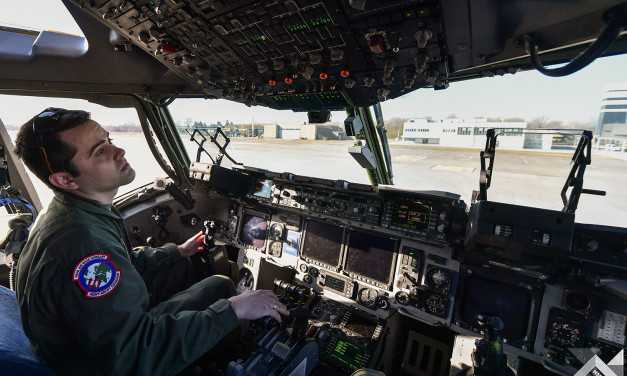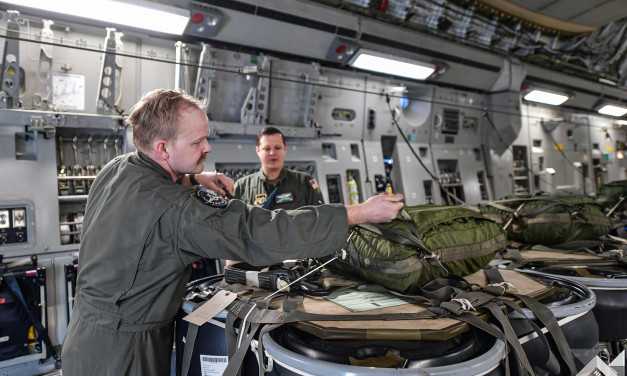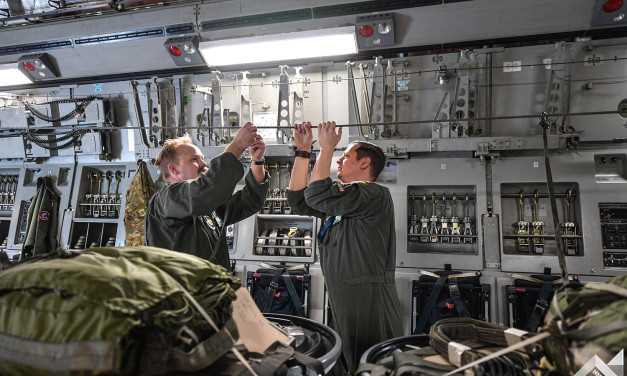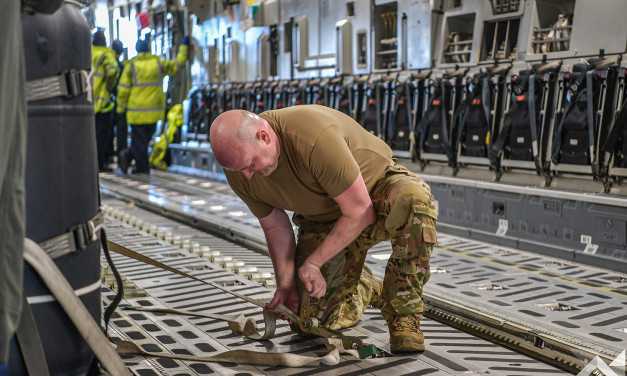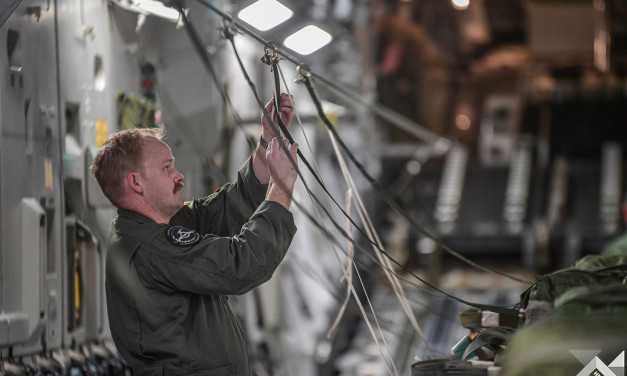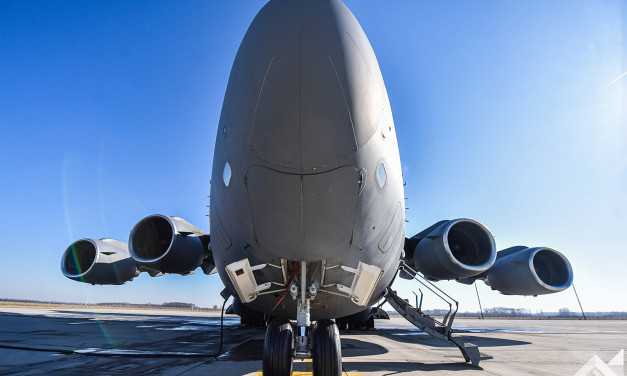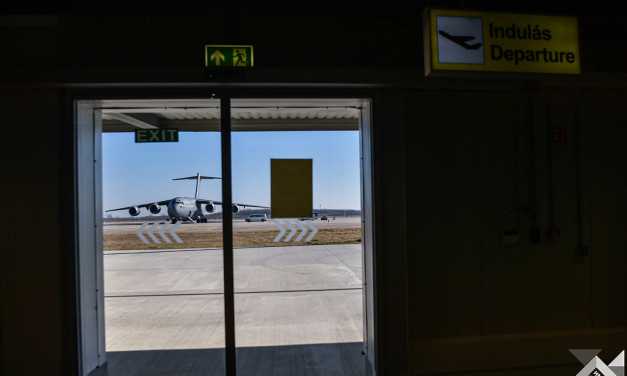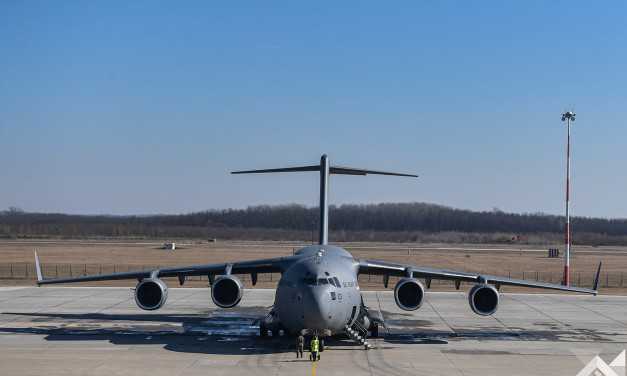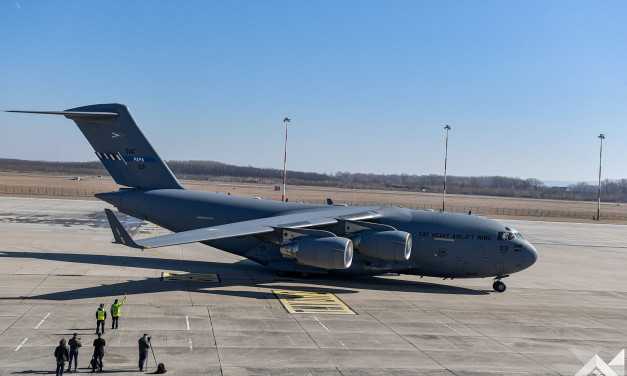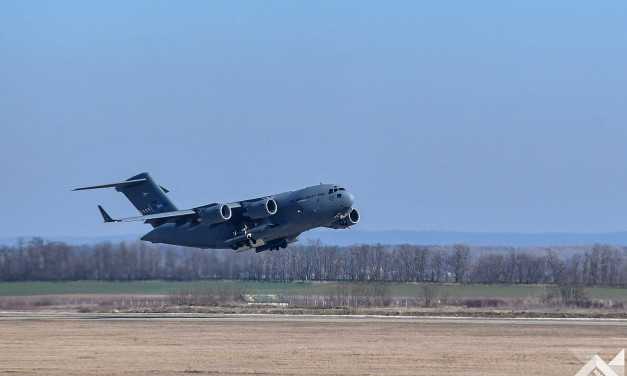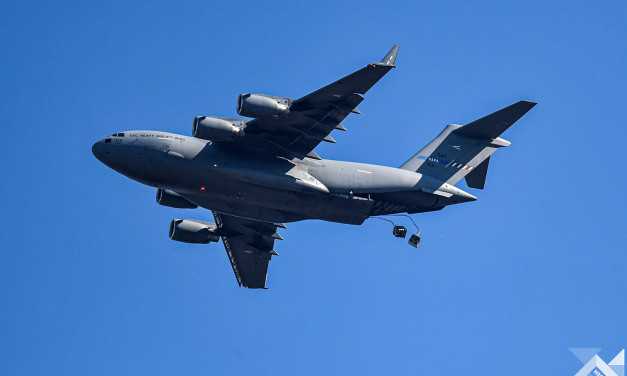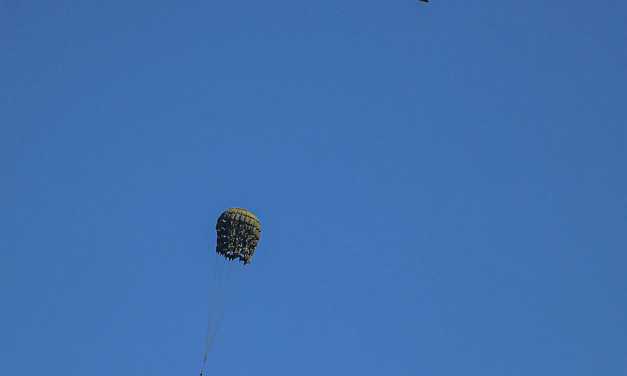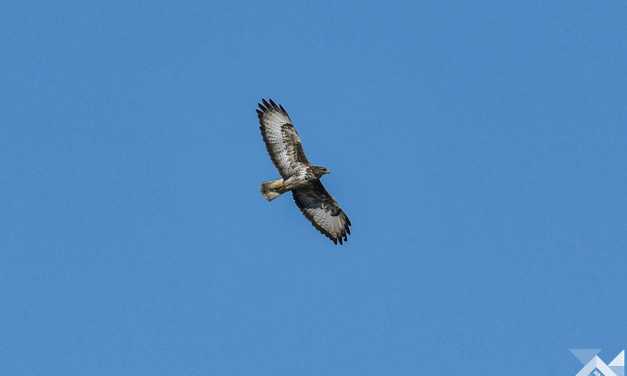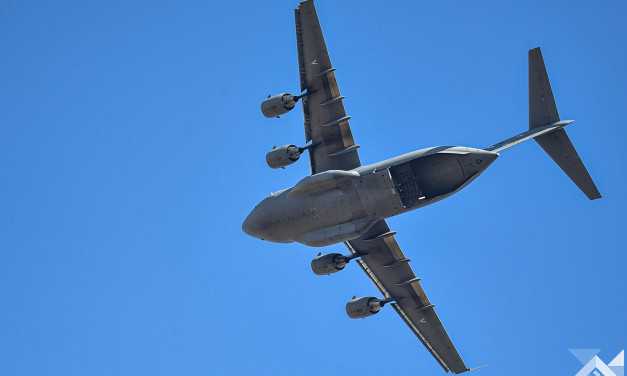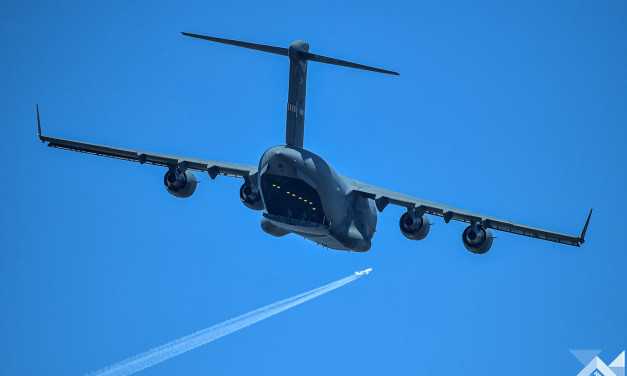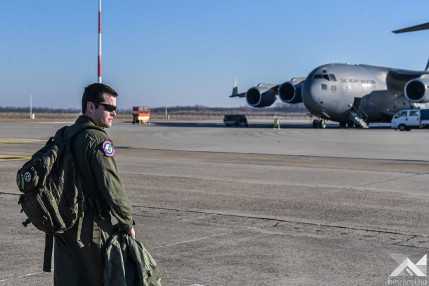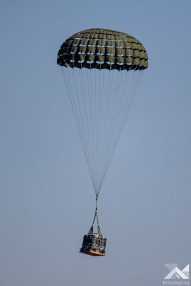Due to its gigantic dimensions, the C-17 Globemaster III is one of the most important and versatile aircraft in strategic airlift, say the airmen of the Heavy Airlift Wing. The aircraft recently had opportunity to demonstrate its exceptional cargo airdrop capability above the village of Kenyeri.
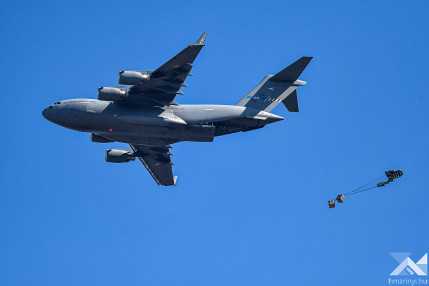
The complex international execution of military tasks is almost everyday routine at the HDF 47th Air Base in Pápa. Thus, several types of fixed-wing aircraft use the airspace and tarmac of the airbase, but the Heavy Airlift Wing (HAW) is the only local user of the C-17 Globemaster III airlifters. They conduct strategic airlift missions with the contributions of 12 nations, including Hungary. If needed, they deliver troops and equipment to conflict zones; on other occasions, they carry aid supplies with humanitarian purpose.

“We fly all over the world smoothly and without accidents, adapting to the needs of our nations” – said Colonel Harry Oostema. The Dutch vice-commander of the HAW told us that last year, for example, they transported mobile houses for those who suffered damage in the Hawaii wildfires, and generators for a hospital struggling with power outages in the earthquake-ridden northern zone of Türkiye.
“The year 2024 saw the opening of our multi-role Combined Aerial Port Facility, where we dry used parachutes and prepare large-size loads” – said the Dutch vice-commander, adding that the latter can be transported flexibly and safely only aboard the C-17 aircraft. The currently serving – already second – Hungarian C-17 pilot obtained his license for the aircraft of extraordinary size last year.
“With its more than 50×50 meter-dimensions, the C-17 is considered huge even among transport aircraft. It can transport 75 tons, and airdrop Humvees, trucks and pallets with parachute. It has air-to-air refueling capability, and a further advantage, as it can take off from and land on short runways” – says First Lieutenant Máté Hernádi while listing the characteristics of the aircraft.
The Hungarian officer graduated in the rank of artillery lieutenant from the Faculty of Military Science and Officer Training at Ludovika University of Public Service in 2015. He served no more than a day in his original position in Szolnok, and then immediately turned to aviation. He completed a parachuting course in Hungary, as well as the NATO Flying Training in Canada (NFTC) and a pilot training course in the USA before he was appointed pilot-in-command in the HAW. According to him, regular flying makes the personnel self-confident even in real-world situations.
“Fortunately, we always use one of the three heavy airlifters stationed in Pápa to fly training flights. The personnel conduct day and night training flights every week, whereas air-to-air-refueling and cargo airdrop every month.”
On 6 March, they were practicing the latter: they flew above the drop zone located in a distance of 30 kilometers from Pápa. “Having flown some traffic circuits, they practiced airdrop drills four times. First, they dropped a 1.5-ton Heavy Vehicle Pallet, and then three pairs of 400 kg Container Delivery System Pallets. The former substitutes for trucks, while the latter for medium-weight loads, for example, food cargo” – said HAW Chief of Directorate Sergeant First Class Péter Gotthárd, who called it very important that they can deliver loads with the C-17 to the target area without landing. “Distance is no obstacle, be it large equipment, ammunition or humanitarian aid transport. Occasionally, we drop cargo and paratroops outside Hungary, for example in Italy or Poland” – he added.
Practicing airdrop drills

